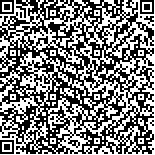| Quote
: |
张容,刘少琼,杨芳,兰智华,付学源,李益麟.复方芙蓉花叶提取物对大鼠感染创面愈合的影响[J].湖南中医药大学学报英文版,2021,41(10):1540-1545.[Click to copy
] |
|
| |
|
|
| This paper
:Browser 3485times Download 1894times |
| 复方芙蓉花叶提取物对大鼠感染创面愈合的影响 |
| 张容,刘少琼,杨芳,兰智华,付学源,李益麟 |
| (南华大学附属第一医院肛肠科, 湖南 衡阳 421000;南华大学附属第一医院病理科, 湖南 衡阳 421000) |
| 摘要: |
| 目的 探讨复方芙蓉花叶提取物对大鼠感染创面愈合的作用及机制。方法 选用60只大鼠根据随机数字表法分为空白组、模型组、庆大霉素组、复方芙蓉花叶组,每组15只。在每组大鼠近尾部脊柱旁制造一创面,除空白组外,其余3组大鼠创面均接种大肠埃希菌及表面葡萄球菌的混合菌,制作感染模型。待造模成功后,空白组和模型组予以凡士林纱条;庆大霉素组予以庆大霉素纱条;复方芙蓉花叶组予以复方芙蓉花叶提取物纱条换药。干预后3、7、15 d观察各组大鼠创面直径;并采用HE染色观察创面组织病理形态变化;利用ELISA法检测创面组织中白介素-1(interleukin-1,IL-1)和酸性成纤维细胞生长因子(acidic fibroblast growth factor,aFGF)水平。结果 造模48 h后,各模型大鼠可见白色脓苔、明显红肿、大量渗出和脓液,提示造模成功。与空白组比较,模型组各时间点创面直径均变大(P<0.05);在干预后7、15 d,与空白组、模型组、庆大霉素组比较,复方芙蓉花叶组创面直径明显变小(P<0.05)。HE染色结果示,干预后各时间点,模型组见较多中性粒细胞及淋巴细胞,复方芙蓉花叶组较其他3组炎症细胞减少、肉芽组织增生、肌母细胞增多。ELISA检测结果示,与空白组比较,模型组干预后3、7 d的IL-1含量增多(P<0.05);干预后3、7 d,与模型组比较,复方芙蓉花叶组IL-1含量明显减少(P<0.05);干预后3、7、15 d,与庆大霉素组比较,复方芙蓉花叶组IL-1含量减少(P<0.05)。与空白组比较,模型组干预后15 d的aFGF含量降低(P<0.05);干预后3、7、15 d,与模型组、庆大霉素组比较,复方芙蓉花叶组aFGF含量明显增多(P<0.05)。结论 复方芙蓉花叶提取液可能通过控制感染创面组织中IL-1的水平以及上调创面组织中aFGF的表达,从而控制创面炎症反应、使炎症细胞和水肿减轻、促进肉芽组织增生、加快创面愈合时间。 |
| 关键词: 复方芙蓉花叶 感染创面 创面愈合 白介素-1 酸性成纤维细胞生长因子 |
| DOI:10.3969/j.issn.1674-070X.2021.10.012 |
| Received:January 16, 2021 |
| 基金项目:湖南省中医药科研计划课题项目(201960)。 |
|
| Effect of Compound Hibiscus Mosaic Extract on the Healing of Infected Wound in Rats |
| ZHANG Rong,LIU Shaoqiong,YANG Fang,LAN Zhihua,FU Xueyuan,LI Yilin |
| (Department of Proctology, The First Affiliated Hospital of University of South China, Hengyang, Hunan 421000, China;Department of Pathology, The First Affiliated Hospital of University of South China, Hengyang, Hunan 421000, China) |
| Abstract: |
| Objective To explore the mechanism of compound hibiscus mosaic ethyl acetate extract on wound healing in rats. Methods 60 rats were selected and randomly divided into blank group, model group, gentamicin group, and compound hibiscus mosaic group according to random digital tables, with 15 rats in each group. A wound was created near the tail spine of each group of rats, and except for the blank group, the other three groups were inoculated with a mixture of Escherichia coli and surface Staphylococcus to make an infection model. After successful molding, the blank group and the model group were given vaseline yarn, the gentamicin group was given gentamycin yarn, and the compound hibiscus mosaic group was given compound hibiscus mosaic extract yarn dressing. Rat wound diameters were observed at 3, 7 and 15 days after intervention. Wound histopathological morphology was observed by HE staining. Interleukin-1 (IL-1) and acid fibroblast growth factor (aFGF) levels were measured by ELISA. Results After 48 hours, white pus moss, significant redness, massive exudation and pus were observed in each model rats, suggesting the moulding was successful. Compared with the blank group, the wound diameter of the model group was larger at each time point (P<0.05). Compared with blank group, model group and gentamicin group, the wound diameter of compound hibiscus mosaic group decreased significantly at 7 and 15 days after intervention (P<0.05). The results of HE staining showed that there were more neutrophil and lymphocyte in the model group, less inflammatory cells, more granulation tissue and more myoblasts in the compound hibiscus mosaic group than in the other 3 groups. ELISA results showed that compared with the blank group, the level of IL-1 in the model group increased at the 3rd and 7th day after intervention (P<0.05); compared with the model group, the level of IL-1 in the compound hibiscus mosaic group decreased significantly at the 3rd and 7th day after intervention (P<0.05); after 3, 7, 15 days, compared with the gentamicin group, the content of IL-1 in compound hibiscus mosaic group was decreased (P<0.05). Compared with the blank group, the aFGF content in the model group decreased after 15 days of intervention (P<0.05). After 3, 7, 15 days, compared with model group and gentamicin group, the content of aFGF in compound hibiscus mosaic group was significantly increased (P<0.05). Conclusion The compound hibiscus mosaic extract may control wound inflammation, reduce inflammatory cells and edema, promote granulation tissue proliferation and accelerate wound healing time by controlling IL-1 level and up-regulating aFGF expression in infected wound tissue. |
| Key words: compound hibiscus mosaic infected wound wound healing interleukin-1 acidic fibroblast growth factor |
|

二维码(扫一下试试看!) |
|
|
|
|


